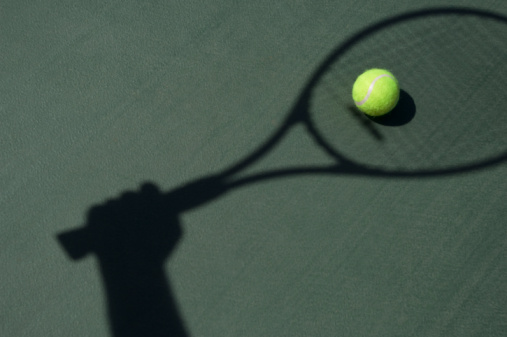What Really Grinds My Gears

How is it that most “developmental players” show up with a decent forehand grip and stroke, but it ends right there. How is it that they have a hard time grasping the concept of a Continental Grip? How is it that they miss out on learning a grip that will help them execute a variety of shots using a Continental Grip at an early (learning) age.
Bear with me here … I’m generalizing a bit, but in my experience as a teacher in this sport, I have noticed at least for every 10 players who show as “developmental” players, there are eight or nine who do not have the experience or feel for the grip, and the usual answer I receive is that “It’s hard.” I always believe in teaching the proper skills, even if the player is playing once a week.
The least taught grip is the Continental Grip, and the most taught is either the Semi-Western or Western Grip—generally for the forehand. Forehands, or Semi-Western/Western Grips are easy to learn; the Continental Grip, which can be used on a player’s two-handed backhand grips, are hard. Continental Grips are used in practically every other shot other than forehands.
So, which grip should be learned more or often for long-term success in the sport of tennis? I really hope your pick is the Continental Grip.
When a forehand is learned, regardless of the grip, two different scenarios appear:
►Instant success (for the short-term) that the ball “went over the net;” and
►Unfortunately, the players tend to keep the same grip for every other shot (or something else rather than the required grip, and deprive themselves of learning the most valuable grip).
When a Continental Grip is being taught, it generally takes a longer time than usual because it requires loads of practice, feel and the discipline to achieve that “comfort” in holding the grip. However, most players lose interest in learning the much more needed and used Continental Grip. It is unfortunate, but a reality.
It is the most-used grip in the sport which generally translates to it being the most versatile—helping in a variety of shot-making situations—changing paces, depths and angles on all of a player’s shots that are not a forehand. Most shots that require the Continental Grip make the player dangerous and crafty, and help them compete in any style.
Forehands, as I mentioned before, have but a few variety of grips and swing styles. But grips, however, don’t vary as much between shots (unless the player is a touring tournament player).
It really grinds my gears when players come in for lessons and show in interest in improving their game, but do not have the much-needed Continental Grip. I try to see if they are able to execute a variety of shots—or in this instance, do they have a Continental Grip? And do they know how, when, or why to use it? And do they know the dividends they can gain from it? And if they are new to it, are they willing to explore that particular grip?
To learn a Continental Grip is quite simple, any average pro should be able to teach and assign take-home-work for their players to make them feel comfortable and confident. With practice, they will have the ability to use it frequently during the lesson and gradually continue to use it during point- and match-play.
Players will have the ability to close the net more, and execute volleys and overheads with ease and confidence and help them tremendously with their serves (which happen to be the most important shot in the game).
It is very important to provide players with the right tools, and basic foundations of the game: Footwork and grips, in this instance, is the key. Have the player think long-term success, as opposed to short-term gains—whether recreational or tournament player.
Tennis is a great individual sport, if not for win or loss, develops and helps a player learn about discipline, patience, and how to be responsible for their own abilities and actions. If so, why not provide them with the appropriate tools? As teachers and coaches, we are responsible to help teach the sport to any player at any level. Once a player masters the foundations, let them run wild on the court with their variety of shots, and you will see them benefit from it at every turn of their growth!






